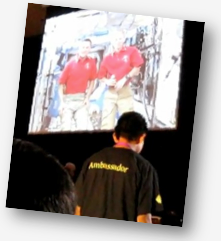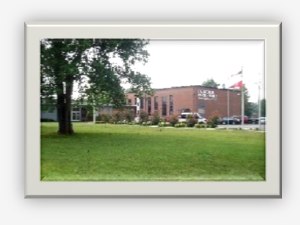 As a result of student interest generated by a recent NASA downlink at Johnston Middle School, NASA Explorer Schools educator Lanena Berry reports the school has instituted a Space Explorer’s Club. So far this year, club members have researched the SPHERES satellites on the International Space Station. Students have been introduced to NASA’s website and participated in the NES module, Engineering Design Challenge: Spacecraft Structures (must be logged into the NES Virtual Campus website).
As a result of student interest generated by a recent NASA downlink at Johnston Middle School, NASA Explorer Schools educator Lanena Berry reports the school has instituted a Space Explorer’s Club. So far this year, club members have researched the SPHERES satellites on the International Space Station. Students have been introduced to NASA’s website and participated in the NES module, Engineering Design Challenge: Spacecraft Structures (must be logged into the NES Virtual Campus website).
Month: January 2011
International Space Station EarthKAM Winter 2011 Mission
 International Space Station EarthKAM is a NASA-sponsored project that provides stunning, high-quality photographs of Earth taken from the space shuttle and the space station. Since 1996, EarthKAM students have taken thousands of photographs of Earth by using the World Wide Web to direct a digital camera on select spaceflights and, currently, on the space station.
International Space Station EarthKAM is a NASA-sponsored project that provides stunning, high-quality photographs of Earth taken from the space shuttle and the space station. Since 1996, EarthKAM students have taken thousands of photographs of Earth by using the World Wide Web to direct a digital camera on select spaceflights and, currently, on the space station.Document Your Lunar Plant Growth Chamber Investigation With a Stop-Action Camera
 Wouldn’t it be great to have a stop-action camera that could document the growth of your students’ plants in the NASA Explorer Schools module, Lunar Plant Growth Chamber? What might be other possible classroom uses for such a camera?
Wouldn’t it be great to have a stop-action camera that could document the growth of your students’ plants in the NASA Explorer Schools module, Lunar Plant Growth Chamber? What might be other possible classroom uses for such a camera?
NASA Now: X-48B Research Aircraft and Green Technology
 NASA is researching ways to incorporate “green technology” into new airplane designs. One new design uses a blended wing body, which has the potential to enable cleaner, quieter and higher performance in air transportation. This unique aircraft is called the X-48B and is being tested right now at NASA’s Dryden Flight Research Center in California.
NASA is researching ways to incorporate “green technology” into new airplane designs. One new design uses a blended wing body, which has the potential to enable cleaner, quieter and higher performance in air transportation. This unique aircraft is called the X-48B and is being tested right now at NASA’s Dryden Flight Research Center in California.
What is the future for this type of technology? Could the design be used in the near future for commercial air flight? Watch this episode to learn more about green technology, test flights and the future.
Link to the NES Virtual Campus home page.
Design a Spacecraft to Explore Mercury
 NASA and the American Association for the Advancement of Science have teamed up to create a website for students in support of the MESSENGER mission to Mercury. In the Make a Mission module, students design a spacecraft capable of completing several mission goals as it explores the planet closest to the sun.
NASA and the American Association for the Advancement of Science have teamed up to create a website for students in support of the MESSENGER mission to Mercury. In the Make a Mission module, students design a spacecraft capable of completing several mission goals as it explores the planet closest to the sun.Hobgood Students Walk to the Moon
 Sixth-grade mathematics and science teacher and NASA Explorer Schools educator Chick Knitter and the staff of Hobgood Elementary School in Murfreesboro, Tenn., have developed a unique and exciting challenge for their 400 students — walk to the moon!
Sixth-grade mathematics and science teacher and NASA Explorer Schools educator Chick Knitter and the staff of Hobgood Elementary School in Murfreesboro, Tenn., have developed a unique and exciting challenge for their 400 students — walk to the moon!